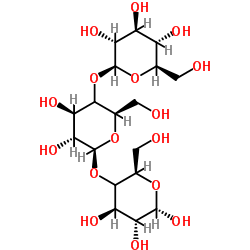Endogenous molecules induced by a pathogen-associated molecular pattern (PAMP) elicit innate immunity in shrimp.
Yu-Yuan Chen, Jiann-Chu Chen, Yong-Chin Lin, Suwaree Kitikiew, Hui-Fang Li, Jia-Chin Bai, Kuei-Chi Tseng, Bo-Wei Lin, Po-Chun Liu, Yin-Ze Shi, Yi-Hsuan Kuo, Yu-Hsuan Chang
Index: PLoS ONE 9 , e115232, (2014)
Full Text: HTML
Abstract
Invertebrates rely on an innate immune system to combat invading pathogens. The system is initiated in the presence of cell wall components from microbes like lipopolysaccharide (LPS), β-1,3-glucan (βG) and peptidoglycan (PG), altogether known as pathogen-associated molecular patterns (PAMPs), via a recognition of pattern recognition protein (PRP) or receptor (PRR) through complicated reactions. We show herein that shrimp hemocytes incubated with LPS, βG, and PG caused necrosis and released endogenous molecules (EMs), namely EM-L, EM-β, and EM-P, and found that shrimp hemocytes incubated with EM-L, EM-β, and EM-P caused changes in cell viability, degranulation and necrosis of hemocytes, and increased phenoloxidase (PO) activity and respiratory burst (RB) indicating activation of immunity in vitro. We found that shrimp receiving EM-L, EM-β, and EM-P had increases in hemocyte count and other immune parameters as well as higher phagocytic activity toward a Vibrio pathogen, and found that shrimp receiving EM-L had increases in proliferation cell ratio and mitotic index of hematopoietic tissues (HPTs). We identified proteins of EMs deduced from SDS-PAGE and LC-ESI-MS/MS analyses. EM-L and EM-P contained damage-associated molecular patterns (DAMPs) including HMGBa, HMGBb, histone 2A (H2A), H2B, and H4, and other proteins including proPO, Rab 7 GPTase, and Rab 11 GPTase, which were not observed in controls (EM-C, hemocytes incubated in shrimp salt solution). We concluded that EMs induced by PAMPs contain DAMPs and other immune molecules, and they could elicit innate immunity in shrimp. Further research is needed to identify which individual molecule or combined molecules of EMs cause the results, and determine the mechanism of action in innate immunity.
Related Compounds
| Structure | Name/CAS No. | Molecular Formula | Articles |
|---|---|---|---|
 |
beta-(1,3)-D-Glucan
CAS:9012-72-0 |
C18H32O16 |
|
Lipopolysaccharide and β-1,3-glucan-binding protein (LGBP) b...
2016-02-01 [Dev. Comp. Immunol. 55 , 144-51, (2015)] |
|
The glucan components of the cell wall of baker's yeast (Sac...
1969-09-01 [Biochem. J. 114 , 557, (1969)] |
|
Human antimicrobial peptide LL-37 inhibits adhesion of Candi...
2011-01-01 [PLoS ONE 6(3) , e17755, (2011)] |
|
Cell wall staining with Trypan blue enables quantitative ana...
2015-01-01 [Front. Microbiol. 6 , 107, (2015)] |
|
A recombinant Sp185/333 protein from the purple sea urchin h...
2016-08-01 [Immunobiology 221 , 889-903, (2016)] |